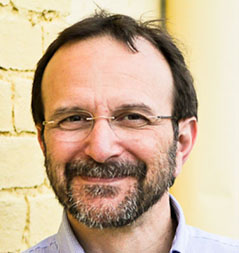TWiM reveals that the ice cream manufacturing environment harbors psychrotrophic bacteria, and identification of a deadly bacterial strain causing widespread deaths of newborns in Uganda.
TWiM presents a protocol for evolving caffeine-tolerant yeast by high school students in the home, and how predator-prey dynamics change when multiple bacteria grow together in biofilms.
TWiM explores the activation of natural product synthesis using CRISPR interference in Streptomyces, and how light/dark and temperature cycling modulate electron flow in Pseudomonas aeruginosa biofilms
TWiM explains the use of lavender oil to disrupt Listeria biofilms, and how treatment of catheters with liquid silicone reduces associated urinary tract infections.
On this episode of TWiM, using colicins to ferry DNA into cells through an iron transporter, and construction of highly efficient microbial fuel cells that produce more electrical current than previously observed.
TWiM explores the role of biofilms in infection by coronaviruses, and development of a Shigella vaccine using outer membrane vesicles derived from Salmonella.
On this episode, an electrochemical scaffold that delivers safe doses of hypochlorous acid to treat wound infections in humans, and a method for sampling and monitoring bacteria and viruses on surfaces using plain paper stickers.
TWiM explains how Vibrio biofilms are dispersed by polyamine signals, and the induction of inappetence by respiratory virus infection which causes alteration of the gut microbiome.
TWiM explores the use of a bacterial protein to make highly conductive microbial nanowires, and how modulin proteins seed the formation of amyloid, a key component of S. aureus biofilms.
TWiM reveals a potential mucus-busting weapon for patients with cystic fibrosis, and bacteria in the intestinal tract that can oxidize cholesterol, leading to lower levels of the lipid in blood.


